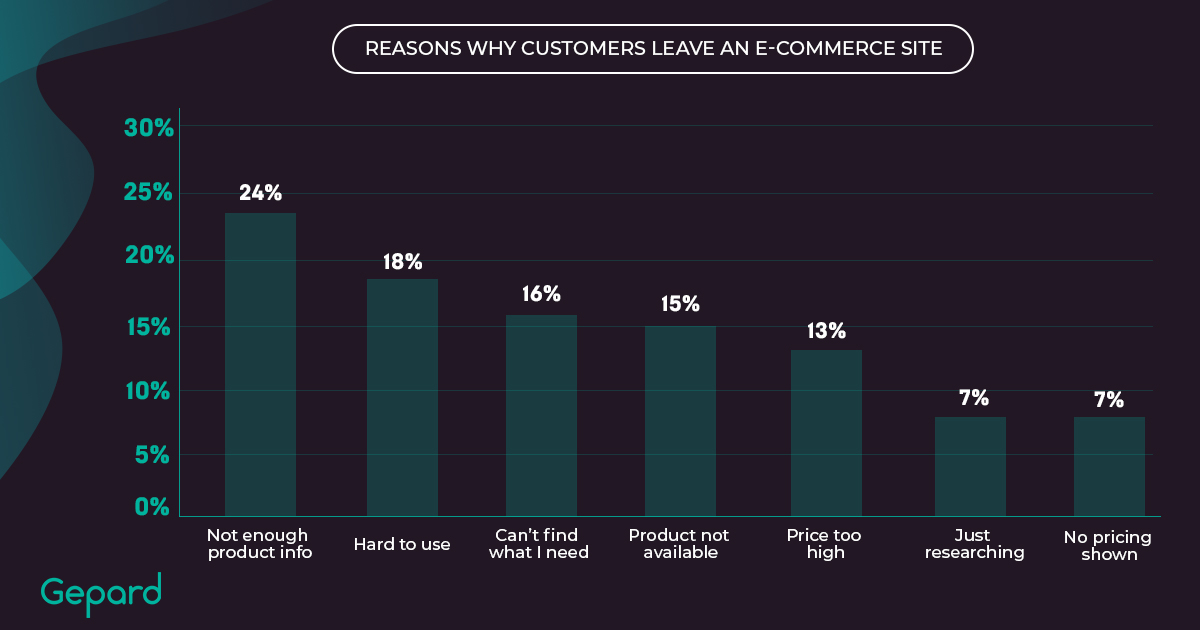PIM and Product Distribution Channels: Where Is the Connection?
According to GlobalWebIndex, about 75% of the world’s population aged 16-64 shop online on a monthly basis. An omnichannel eCommerce strategy is a key to being among the companies that such buyers have selected. Just look at the world’s most visited websites in 2020 and you will have no questions:

Source: statista.com.
Generally, websites with the highest number of unique users are marketplaces. The rest websites are owned by official brands’ distributors. it’s not surprising because, according to RealResultsMarketing, eCommerce websites boast extensive flexible search functionality, rich product libraries, and maximum resources for quick purchases. But how many sales platforms do you need to cover for occupying a truly leading position on the market?
For example, American clothing company Polo Ralph Lauren, which is part of the Fortune 1000, is represented at 11,163 platforms around the world!
Imagine how much content the marketing and distribution department generates daily. Or annually? Of course, all this work is not performed manually, but with a help of special software – product information management tools.
The Key Role of Product Information Management Systems in the Brands’ Success Stories
A very reasonable question that arises for brands and retailers: “Is it necessary to integrate a product information management system if the company’s market volume has not yet reached the level of Polo Ralph Lauren?” Judge for yourself.
However, here is a variety of sales partners you might have worked with in terms of the product data distribution:

Each type of these sellers has its own product data requirements. This means you need to adjust the product information for all of them which will result in endless hours of manual work for your eCommerce or content team. Therefore, you may have faced a problem with employee turnover and burnout.
Another significant challenge eCommerce companies frequently face, is an increasing number of abandoned carts and the bounce rate. The main reason for that lies in the fact that 68% of buyers search online for detailed product information before ordering it. Businesses that have better-structured product catalogs win that race. In other cases, 24% of clients lose interest in the product.
 Source: barilliance.com
Source: barilliance.com
What is Product Information Management Software for businesses in the conditions of channel diversification?
Currently, in the product information management market, the businesses providing both up-to-date and complex product information treat their visitors with a better customer experience.
The modern PIM system features empower companies to boost team efficiency, improve data quality and minimize the number of manual errors:
- Automated data import and export to reduce the number of hours on manual data processing.
- Easy integration with any software ecosystem to facilitate the business processes.
- Content creation and enrichment centrally in one place to enhance the basic product data with catchy images, detailed marketing descriptions, videos, and bullet points.
- Product content syndication allows you to insert all your sales partners’ requirements and set up automated taxonomy transformations.
- Data validation ensures you won’t spend time sending product specification sheets with mistakes to retailers instead of fixing them initially.
Thus, 73% of consumers consider the detailed product content a key factor when choosing products on the Internet, according to research by UPS and ComScore. In such a case, a well-developed product taxonomy solves the problem of both fragmentation and low complexity of product information.
Product Information Management Theory and Practice to Learn in 2021
 1. Branded content expansion.
1. Branded content expansion.
Brent Adamson, the Vice President at Gartner, pointed out that brands need to build customer confidence in their product. It can be performed primarily by adding the company’s history and achievements to increase brand reputation in the eyes of potential customers. So, 33% of buyers, when looking for a product, keep in mind a specific product of a particular brand. Thus, a new kind of product information has appeared. In the PIM system, this can be managed by uploading branded videos and product images, rich content, and efficient marketing messaging.
2. Product data standardization.
Nowadays, 43% of eCommerce traffic comes from Google’s organic search. Having studied the online sales channels’ requirements, we have come to the conclusion that the single product data standard creation is crucial for all market players in 2021. Consider such growing market trends as the transition to voice search, banner blindness, passion for “quick” purchases, and sales through video content and adapt your product information to it. All this product information content can be easily managed and adjusted for a variety of sales channels in a PIM system.
3. Data consolidation.
To update the data on all selling platforms at once, you need to have a single center for storing such information. Given the fact companies can use 20+ product attributes for one product, it will be 6 times faster to manage data information not in Excel sheets, but in modern eCommerce systems that can immediately export content in the format needed to resellers.
4. Content creation process optimization.
On average, to cover all content management tasks (from consolidation to export through distribution channels), the organization uses up to 5 services and programs, which spends half the time on organizational processes that do not bring tangible results. PIM as a single system will facilitate your product information management process, reduce the time for routine tasks and let you focus all efforts on more constructive work. it’s confirmed by Ventana statistics: in 2021, 50% of companies are going to use PIM in their activities.
5. Distribution of roles.
To work on data aggregation, the company attracts, on average, up to five specialists in various fields of content marketing. The latest product information management features will help you to optimize work processes, increase the team’s productivity, share responsibilities and avoid duplicated tasks.
6. Planning and automation.
Today, 31,8% of companies achieve 27.1% more results than companies that do not have clear plans and eCommerce strategies. Automation of product information management workflows plays a significant role in this “victory.” Using a PIM system allows you to set individual settings, so you do not need to create similar algorithms for product content routine tasks on a daily basis.
Stop Reading about Ecommerce Trends and Start Implementing Them
Have you found something useful for your eCommerce strategy? Implement all product information management trends now with Gepard! The Gepard PIM & Syndication solution was developed by 150 marketers and developers with 15 years of expertise in creating custom eCommerce solutions for brands and retailers.
Take a look at our collaboration experience with the leading brands of the eCommerce market and see that a 75% increase in operating efficiency is possible. Please fill out the short form to contact our expert, and you’ll get answers to the most pressing questions about PIM today!


